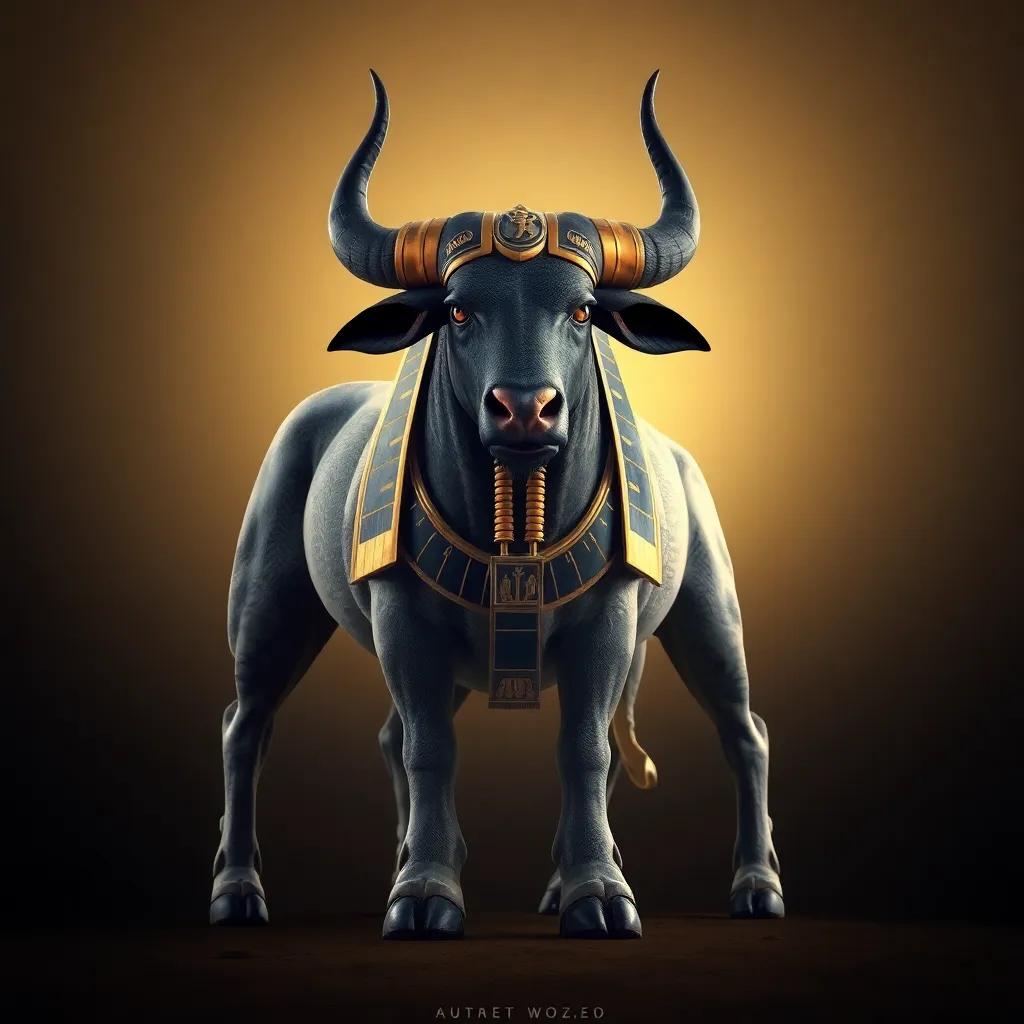The Apis Bull: The Protector of the Pharaoh’s Legacy
I. Introduction
The Apis Bull, a sacred creature in ancient Egyptian culture, held profound significance as a symbol of strength, fertility, and protection. Revered by the Egyptians, the Apis Bull was seen as a manifestation of the god Ptah and played a crucial role in the religious, political, and cultural life of ancient Egypt. This article aims to explore the pivotal role of the Apis Bull in safeguarding the Pharaoh’s legacy, considering its historical background, connection to the afterlife, and its cult’s rituals.
II. Historical Background of the Apis Bull
The origins of the Apis Bull date back to the early dynastic period of ancient Egypt, where it was first associated with the god Ptah, the creator and god of craftsmen. The bull was characterized by specific markings, including a white triangle on its forehead and a scarab beetle on its back, symbolizing its divine status.
In relation to other deities, the Apis Bull was often linked to Osiris, the god of the afterlife, and Hathor, the goddess of motherhood and love. This connection emphasized its role as a protector and a mediator between the gods and the Pharaohs.
III. The Role of the Apis Bull in Pharaoh’s Reign
The Apis Bull represented not only physical strength but also the fertility of the land and the prosperity of the kingdom. This association made the bull an essential symbol during the Pharaoh’s reign, as it was believed to bestow divine blessings upon the ruler and the nation.
Rituals and ceremonies involving the Apis Bull were integral to the Pharaoh’s rule, including:
- **The Opening of the Mouth Ceremony:** A ritual performed to awaken the bull’s spirit and bestow its powers upon the Pharaoh.
- **Sacred Festivals:** Celebrations held in honor of the Apis Bull, where it was paraded through the streets, showcasing its importance to the community.
- **Offering Rituals:** The community would present offerings to the Apis Bull, seeking its favor and blessings for good harvests and prosperity.
IV. The Connection Between the Apis Bull and the Afterlife
The Apis Bull was believed to play a significant role in the afterlife, guiding the Pharaoh to the realm of the dead. It was thought that the bull would act as a protector in the afterworld, ensuring the Pharaoh’s safe passage and continued legacy.
Funerary practices surrounding the Apis Bull included:
- **Mummification:** Upon the death of an Apis Bull, it was mummified in a manner similar to Pharaohs, signifying its importance in the afterlife.
- **Burial in Sacred Tombs:** The bull was interred in elaborate tombs, often accompanied by lavish offerings to sustain it in the afterlife.
- **Commemoration:** The death of an Apis Bull was a significant event, marked by nationwide mourning and rituals to honor its soul.
V. The Cult of the Apis Bull
The worship of the Apis Bull was centralized in Memphis, where a grand temple was dedicated to its veneration. The cult surrounding the Apis Bull was a vital aspect of Egyptian religion.
Key elements of the Apis Bull cult included:
- **Temples:** Large sanctuaries were constructed to house and honor the Apis Bull, where devotees could come to pray and make offerings.
- **Role of Priests:** A dedicated priesthood managed the care and rituals associated with the Apis Bull, performing daily rites to maintain its favor.
- **Community Involvement:** The local community played an active role in the celebrations and rituals, reinforcing the bull’s significance in their everyday lives.
VI. Iconography and Artistic Representations
The Apis Bull was extensively depicted in ancient Egyptian art, symbolizing its revered status. Artistic representations included:
- **Statues:** Magnificent statues of the bull were created, often adorned with jewels and placed in temples.
- **Reliefs:** Wall carvings and tomb paintings frequently illustrated scenes of the bull in rituals, showcasing its divine attributes.
- **Amulets:** Small amulets featuring the Apis Bull were worn by individuals as protective charms, reflecting its importance in daily life.
These artistic representations not only highlight the bull’s significance but also serve as a testament to the skill and devotion of ancient Egyptian artisans.
VII. The Decline of the Apis Bull Cult
<pDespite its prominence, the cult of the Apis Bull began to decline during the later periods of ancient Egypt, particularly with the advent of foreign rule and the spread of new religious practices.
Factors contributing to this decline included:
- **Foreign Invasions:** Conquests by foreign powers disrupted traditional practices and led to the erosion of the Apis Bull’s worship.
- **Religious Transformation:** The rise of new deities and belief systems, such as Christianity, shifted the focus away from ancient Egyptian gods and practices.
- **Political Changes:** The changing political landscape diminished the Pharaoh’s authority, impacting the traditional rituals associated with the Apis Bull.
VIII. Conclusion
In summary, the Apis Bull played a vital role in safeguarding the Pharaoh’s legacy through its associations with strength, fertility, and protection. Its significance in rituals, the afterlife, and the community reflects the deep reverence the ancient Egyptians held for this sacred creature.
Reflecting on the lasting impact of the Apis Bull, we gain invaluable insights into the complex tapestry of ancient Egyptian culture, highlighting the importance of mythology and ritual in shaping their understanding of life, death, and the afterlife.




